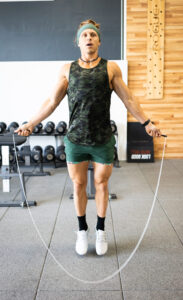how i fixed my decade of injuries
At the age of 20, a severe back injury led me to become “patient X”.
This marked the beginning of a decade-long quest fix my back injury, and other injuries that came my way.
As a former Division 1 soccer player with an impressive physique featuring sub 7% body fat and well-defined muscles, it may seem like I had everything under control. However, appearances can be deceiving.
One regular Friday at the UC Berkeley gym, I found myself contemplating the weight on the Leg Press machine. The persistent urge to push myself harder prevailed, and I loaded the machine for a more challenging session.
My journey wasn’t helped by my unwavering commitment to maintaining a caloric deficit for over a year. Additionally, being a pre-med student compounded by a sense of depression only added to the challenges I faced.
Moreover, the satisfaction I felt at the end of my workout quickly faded when I stood up and felt the discomfort in my back intensify. The hot sensation that had been lingering for weeks surged to life, accompanied by tingling sensations in my leg and a noticeable weakness.
Even as I shadowed surgeons during an entire semester, the classic signs of a lumbar herniation became all too familiar: numbness, tingling, weakness, and pain.
I had become “THAT GUY” presenting with textbook symptoms.
Months of recovery and an enforced hiatus from the gym followed my back injury. But the journey didn’t end there. The subsequent decade was marked by a series of injuries, ranging from minor to substantial, with numerous ups and downs.
During this period, I ventured into the world of competitive CrossFit, introducing a different form of stress – training stress. My determination to excel in CrossFit meant pushing my limits daily, subjecting myself to strains that led to recurring back issues, persistent knee pain, neck injuries, and ongoing shoulder discomfort.
Through both phases of my life, my body exhibited a degree of resilience. However, this resilience was defined by the delicate balance I struck between stress management, soft tissue care, and proper nourishment. In retrospect, I realized that I consistently pushed my body beyond its stress threshold in each life phase.
Now, let me share with you the five invaluable lessons I wish I had known from the outset.
Unlike many medical professionals I encountered, I won’t advise you to simply stay inactive. My aspiration is to lead an active life and continually challenge myself physically, mentally, and emotionally. In pursuit of this, I’ve diligently sought the most effective approach to embrace an active lifestyle while minimizing the risk of injuries.
Here’s what I’ve learned – the Five Pillars of Resilience.
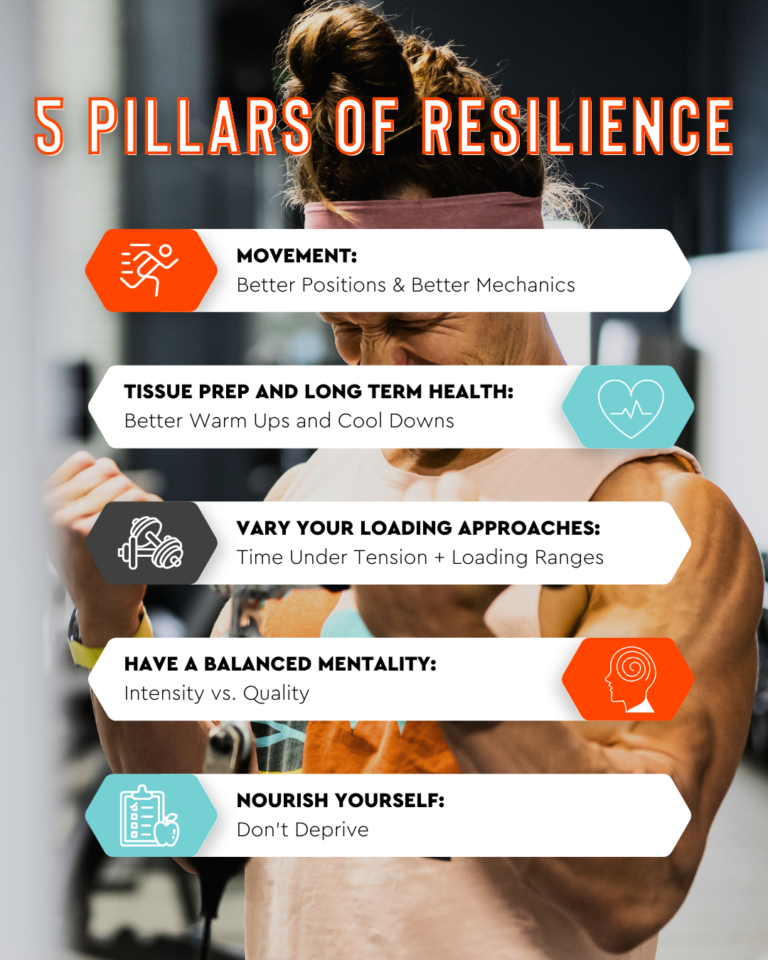
1. Movement
 Better Positions & Better Mechanics
Better Positions & Better Mechanics
Achieving optimal results in your training journey involves more than just exerting yourself at the gym. While dedicated effort is crucial for success, it should follow the establishment of correct form and technique. Much like servicing your car regularly to prevent breakdowns, our bodies’ functionality and movement patterns require periodic tuning to stave off injuries.
Learning how to perform a squat is not a one-time endeavor. Consistent revisiting of the fundamentals is paramount, fostering continuous enhancement of your movement skills and postures. The mastery of improved movement mechanics is cultivated through systematic training with sub-maximal weights and varying intensities. Your training regimen should consistently allocate space for honing better positions in lifts and refining movement mechanics. I found that acquiring proficiency in proper movement techniques played a pivotal role in fixing my back injury, acting as a catalyst for recovery and progress.
2. Tissue Prep and long term health
Better Warm Ups and Cool Downs + Short and Long 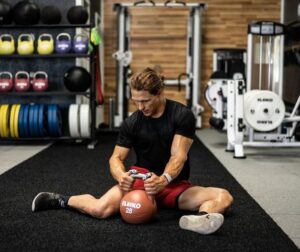
Reflecting back, prioritizing these practices might have averted my back injury entirely. The way we approach our training preparation and post-session recovery significantly impacts the overall well-being of our body tissues. This, in turn, sets the stage for more fruitful training sessions, enabling the achievement of optimal intensity levels with a reduced risk of injury. Establishing a steadfast routine for both warm-ups and cool-downs is imperative.
Moreover, our muscles engage in distinct contractions based on the range of motion our bodies undergo. Embracing both short-range and long-range contractions holds equal importance. It’s essential to target muscles when they’re fully extended (think DEEP SQUATS) and work on them when they’re contracted (think LOW STEP UPS). Striking a harmonious balance between these two aspects is pivotal for enhanced physical resilience. By incorporating these strategies, we can potentially fix and prevent any injuries.
3. Vary Your Loading Approaches
Time Under Tension + 30-85% Loading Ranges
To prevent injuries and maximize gains, diversify your approach to training intensity.
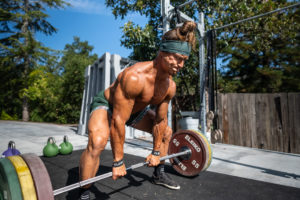
Rather than only pursuing high-intensity routines, explore safer yet impactful techniques. This involves lifting in the 30-85% range of your max capacity and utilizing time under tension (TUT). Surprisingly, muscle growth occurs within 30-85% weight zones, while
TUT tweaks intensity.
Varying TUT, like a 4-sec squat, changes workout impact. Longer TUT elevates sub-max weights’ demands. Combining sub-max weights, TUT, and higher reps boosts safety without sacrificing intensity. This method fosters progress and helps fix injuries.
4. Have a balanced mentality
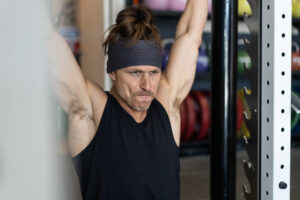 Intensity vs. Quality
Intensity vs. Quality
Fixing my decade of injuries was in part thanks to the science behind managing intensity. I used to believe daily max effort was crucial, which led to injuries. Ironically, relentless intensity hindered progress and led to my back injury.
Retraining my brain to value rest days became essential for healing. Embracing sessions focused on quality, not just intensity, proved equally valuable.
Every person has a unique intensity-quality balance. Alternating quality-driven and intensity-centered sessions is key. Accepting that quality matters for health and longevity is a pivotal mindset shift.
5. Nourish Yourself
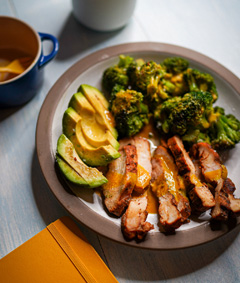 Don’t Deprive
Don’t Deprive
Our body’s foundation is rooted in the nutrients we derive from food. Constantly depriving ourselves for the pursuit of weight loss can undermine our body’s essential components. These components are vital for robust muscles, joints, and connective tissues. Even the best training won’t suffice without supplying the necessary ingredients for thriving.
Hence, I frequently remind myself that food is meant to nourish my body. Modern diet culture sometimes paints food negatively, promoting restrictions and rules. Thus, shifting our perspective on food can greatly impact our body’s resistance to injuries. Opt for nourishment, not just dieting. Prioritize foods that foster growth: proteins, fats, carbs, and an array of micronutrients.
Where I'm At now
Do I experience aches or discomfort nowadays? Absolutely. However, they tend to be mild and manageable. These sensations act as gentle reminders that I might be neglecting one of the core principles I’ve outlined. If pain intensifies, it’s often a signal that I’ve overlooked these aspects for an extended period. In either scenario, I prioritize listening to my body and recommitting to these fundamental principles.
However, my current experience leans toward feeling positive. Pain is infrequent, and I no longer approach training with a constant fear of injury. My nutritional strategy is supportive, and I’m mindful of my ego, focusing on quality over quantity.
I adhere to training guidelines that emphasize proper movement and use loading techniques that challenge without overburdening my body. Continual learning from others aids me in nurturing healthy tissues for the long term.
The outcome is the freedom to move as desired in various situations, without anxiety about injury or setbacks.
So, what’s the key?
It’s no longer a secret. Wholeheartedly embrace these principles, attune yourself to your body’s signals, and recognize when to reinforce your commitments. Cultivate the capacity to enjoy what you love without restrictions, ensuring freedom from injuries or addressing existing ones.
Resilience workouts
Now, let’s translate these concepts into actionable steps for your personal experience. At Functional Bodybuilding, we encourage learning through hands-on engagement. Here’s how you can infuse stability, strength, and flexibility into your tissues and joints. This approach lays the foundation for transforming into a well-rounded athlete with enhanced injury resistance.
The objective of strength training for heightened physical resilience is as follows:
Enhance Mobility Training: Train muscles and joints to achieve suitable ranges of motion required for daily activities.
Prioritize Strength Training: Develop muscles and joints to generate force effectively within functional ranges.
This integration of length and strength is encapsulated in the concept of Stability:
Joint stability involves regulating joint movement across its complete range through the support of surrounding soft tissues and muscles. This stability is pivotal for safeguarding joints and preventing injuries.
These principles have guided me for years, predating my fitness coaching career and formal education. Even in my youth, before college injuries from overtraining, I understood the synergy between strength and mobility training.
Additionally, the benefits of bolstering strength within a complete range became evident. Witnessing how it fortified my joints and instilled stability, reducing injury risks, solidified my belief. The correct execution of a Romanian Deadlift allowed me to touch the ground with my palms during a forward fold. This empowered me with a sense of strength and stability in that position, as opposed to vulnerability.
My close associate, Ben Patrick (Knees Over Toes Guy), reinforced the fusion of strength and mobility training in my modern-day workouts. His methods, which contributed to his remarkable knee resilience, significantly impacted the creation of PERSIST.
For a taste of stability training from Persist, here’s something for you to explore:
Lower Body Stability
Persist PUMP Example
Every 60sec x 9 sets (3 per exercise):
1st minute – Kettlebell Jefferson Curl @2020 Tempo x 4-6 reps (2 second lowering
2nd minute – Left Leg Hand Supported Suitcase Knee Over Toe Split Squat @ 21×0 Tempo x 6-8 reps
3rd minute – Right leg Hand-Supported Suitcase Knee Over Toe Split Squat @21X0 Tempo x 6-8 reps
Intention – Make sure you pause in the split squat for 1 second at the fully stretched position. Move with control on every set. The total time for each movement should take around 30sec, leaving you with 30sec to rest before the next set. Aim to hit approximately 6-7/10 RPE on each set.
Coach Notes
Full range of motion for the hips, knees, and back, will help you avoid or fix injuries.
You will get a full knee bend, a big hip extension stretch, and a full posterior chain flexion and extension contraction.
Movements like this are meant to be performed at moderate to lighter loads. This means more control so you can explore your full range of motion and build strength in these positions.
The time under tension (TEMPO) for each of these movements yields about 30 seconds of work and 30 seconds of rest for 9 minutes. This leads to a metabolic stress on the muscle that is useful for building a pump and driving hypertrophy.
Persist PERFORM Example
PART 1
Every 3mins x 4
Power Clean 1.1.1.1.1 (quickly reset between each rep)
After your 5th rep, immediately move into:
Deficit Strict Handstand Push Up Negative or Strict HSPU Negative @ 41A1 x 5reps
PART 2
3 Sets
Dumbbell Low Incline Bench Press; 32X1; 6-8reps
Rest 2 mins
Coach Notes
In the first Superset, Power Cleans and Handstand Push Ups unite speed strength and skill. Prioritizing stability, Handstand Push Ups involve a controlled 4-count descent and stretched pause, cultivating shoulder strength and control.
Moving to Part 2, a Bench Press variation maximizes range with a low incline (10-15 degrees) and dumbbells. Pausing for 2 seconds at the descent and lowering for 3 seconds fosters shoulder and pectoral stability.
MORE LIKE THIS IN PERSIST
If these workouts and methodology are right up your alley, you might want to give my training program, Persist a try. Choose from five different tracks, get access to e-books, a mobility library, nutrition resources, and so much more. Give it a try for 2 weeks free!
More Resources

Look Good. Move Well.
Workouts for sculpted arms and a six pack are different than those for speed and power. Get my blend of both and a sample nutrition plan. Plus a Big Bicep Bonus for my favorite arm finishers!
